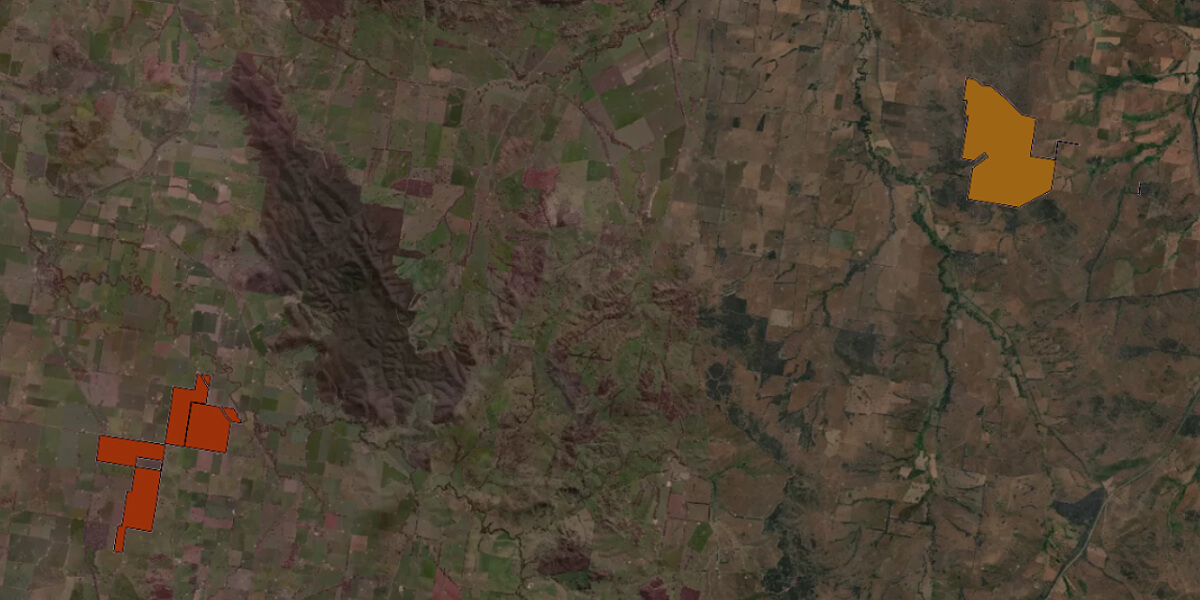If you work in or for the agriculture industry, you might have heard the term NPP - or Net Primary Productivity - being thrown around. But what does it mean and how does it apply in a rural context, specifically for the cropping and grains sector? We can learn a lot about national, regional or even a singular farm’s productivity with NPP and if your organisation isn’t taking advantage of these insights - they should be.
Want to know more? We have you covered, let’s dive in.
What is Net Primary Productivity (NPP)?
NPP represents the rate at which plants store carbon and is measured in grams of carbon per square meter per day (gC m⁻² d⁻¹). Plants absorb carbon through photosynthesis, a process known as Gross Primary Productivity (GPP). However, plants also consume some of this carbon through respiration. The remaining carbon available for growth is called Net Primary Productivity (NPP)—the amount of carbon contributing to new plant biomass.
DAS calculates NPP using a carbon accumulation and turnover model developed by CSIRO, optimised specifically for Australian crops and pastures. This model integrates key environmental factors, including:
- Satellite-derived NDVI imagery (to assess plant health and biomass)
- Elevation (to account for terrain effects on productivity)
- Solar insolation (to factor in available sunlight)
- Air temperature (to reflect climatic conditions influencing growth)
DAS provides NPP data at 16-day intervals from 2001 to the present, allowing for long-term monitoring of plant productivity.
Let’s talk about Long-Term Mean Net Primary Productivity
For every farm in Australia, DAS provides the Long-Term Mean Net Primary Productivity (LTM NPP) metric, which serves as a key measure of farm productivity—essentially, how much plant matter a farm grows over time.
- Crops with greater biomass typically yield higher production.
- Pastures that generate more biomass can sustain higher carrying capacities.
- Regardless of location or production system, a farm with a higher LTM NPP has historically grown more plant material than one with a lower value.
Why Would You Use Long-Term Mean NPP?
By analysing over 22 years of plant productivity data, LTM NPP smooths out seasonal variability, providing a stable, reliable metric for comparing farm performance:
- Helps benchmark farm productivity over time.
- Allows for fair comparisons between farms, even in different regions or climates.
- Reduces short-term fluctuations caused by seasonal variations or extreme weather events.
NPP vs. NDVI – What’s the Difference?
While both NPP and NDVI (Normalised Difference Vegetation Index) are used to assess plant productivity, they measure different aspects:

NDVI is useful for short-term plant health monitoring, while NPP provides a comprehensive measure of long-term productivity.
For within-paddock analysis, NDVI can highlight localised plant health issues, while NPP is better suited for farm-to-farm comparisons over extended periods.
So, here is what we know now…
- NPP quantifies plant growth by measuring the carbon stored in new plant material.
- DAS NPP uses a CSIRO-validated model, optimised for Australian agriculture.
- LTM NPP allows fair comparisons between farms, regardless of location or production type.
- NDVI and NPP complement each other, with NDVI best for short-term plant health monitoring and NPP for assessing overall farm productivity.
To find out how your organisation can start taking advantage of insights like these, speak with one of our team to learn more about our DAS Premium Datasets and Platform access.



